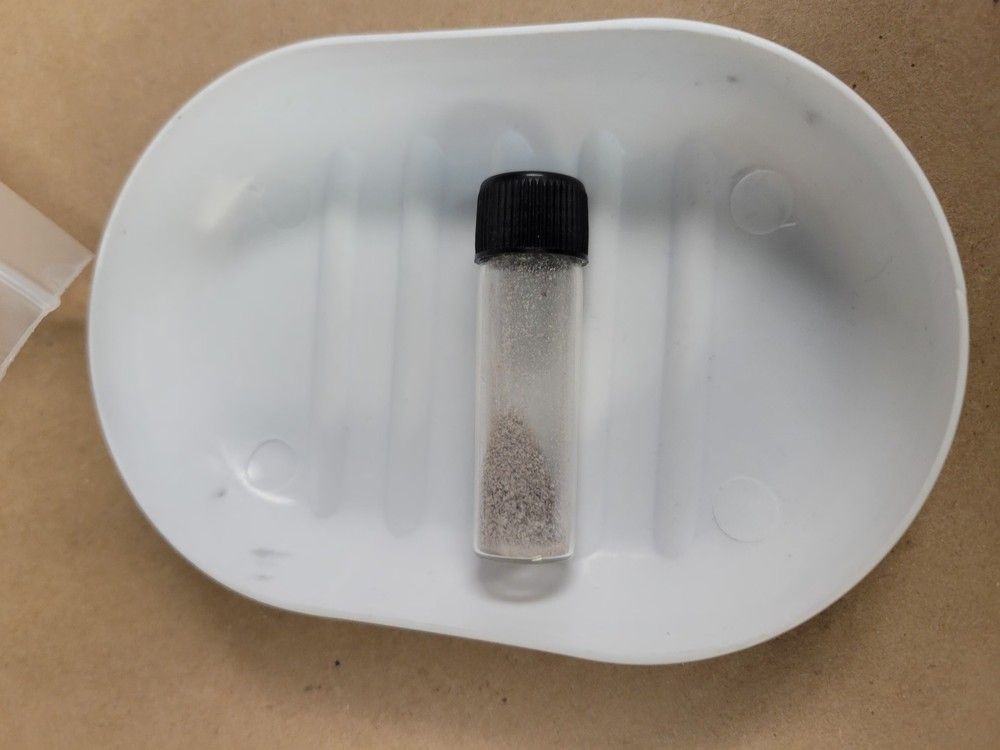
Fatal narcotics at the centre of a coroner’s inquest were found by university students in a glass vial, a container so unusual for street drugs that a police officer said it resembled a Hollywood plot.
“It’s something you would see in a movie, like a Scarface movie,” said Saanich Police Const. Ben Scoones, a drug investigation specialist.
“I have not seen drugs sold in a container like this. … It’s not something we typically see here in Victoria.”
Scoones testified Tuesday at the inquest examining the fentanyl-poisoning death of University of Victoria student Sidney McIntyre-Starko, 18.
When Sidney and a second student collapsed Jan. 23, 2024, witnesses immediately called 911 and campus security for help. But the first-year student did not receive the overdose-reversing drug naloxone for 13 minutes or CPR for 15 minutes, largely because the overdoses were mistaken for seizures.
A student has testified that she found a box of coolers on a downtown Victoria street and brought it back to UVic, where her friends found the glass vial inside. The next day, three students snorted the drugs and all overdosed, but Sidney’s reaction was the most extreme and she died.
Scoones said it is possible, but in his opinion unlikely, that the drugs would be found this way in a box of alcohol on the street. But he noted all three students — the one who found the box, and the two who took the drugs — all provided the same version of events.
“It’s such a shocking story,” he testified.
What he believes may have happened is that whoever bought these drugs likely purchased them in plastic bags or tin foil, and then put it in the glass vial for safe keeping or for a “cooler” look.
That scenario would involve “a very different subsection of user than your typical fentanyl street entrenched user,” Scoones said.

Forensic toxicologist Dr. Aaron Shapiro testified that Sidney’s blood contained a tiny amount of marijuana consistent with “an infrequent user”, and a very high level of fentanyl — a dosage that would be fatal for most people, expect those who are repeat drug users.
“Someone who uses on a regular basis might experience few or no effects, whereas a person who is naive to the effects of the drug — has never been exposed to them — could end up dying from that same amount,” he told the jury.
The inquest has heard another person overdosed on the UVic campus several days before the incident involving these three students, which worried Saanich police.
“Where we’re seeing multiple people overdose at the university over two weeks is concerning. That indicates a toxic supply for us,” Scoones said.
He tried to get video footage of who left the box in downtown Victoria, and pursued other investigative avenues, but could not determine the source of the drugs.
In response to questions from UVic’s lawyer, Scoones suggested some steps post-secondary campuses could take to keep students more safe: training campus security to recognize drug trafficking trends and transactions, anonymous tip lines, and naloxone training and education about the toxic supply.
“I think that there is a burden of responsibility on educators to try and help students,” he said.
The presiding coroner, Larry Marzinzik, explained that the inquest will determine facts related to Sidney’s death, to make recommendations that may prevent similar deaths in the future, and to satisfy the community that the death is not being ignored. It does not determine blame for the death.
The inquest is scheduled for three weeks, with 33 witnesses scheduled to testify. Twelve lawyers are representing various agencies including UVic, the ambulance service and the ministries of health and post-secondary education.
Sidney’s death has led to better access to naloxone and other harm reduction measures on campuses, and promises to improve first aid policies. Sidney’s parents hope the inquest will lead to changes in B.C.’s 911 system, to avoid a similar preventable death from happening in the future.
More to come …